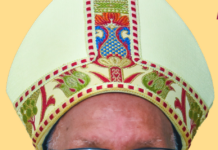From Hansard of 8 March 2021
Jim Shannon: [162605] To ask the Member for South West Bedfordshire, representing the Church Commissioners, what assessment he has made of whether the online broadcasting of services during the covid-19 outbreak has increased the number of people participating in worship.
Andrew Selous: The Church of England has seen a significant increase in public engagement with its online resources over the pandemic. The National Church Institutions have produced a weekly online Sunday Service in video form since Mothering Sunday 2020, as well as the Daily Hope telephone line, podcasts and apps. The Sunday services have had more than 3.7 million views on Facebook and YouTube. A further 20,000 local online services and events have been listed on http://www.AChurchNearYou.com over the last year.
2020 saw an increase of almost 50% in downloads of Church of England apps for prayer and worship, with the apps used around 8 million times during this period. The National Institutions have continued to create resources for the major festivals, accessible on its website and social media. The current campaign #LiveLent is designed to take people on a journey of preparation ahead of Easter Day. This follows on from the #ComfortAndJoy resources, which reached millions during Advent and Christmas.
Most cathedrals and a majority of parishes offer a variety of online services and events: weekly services, morning and evening prayer, children and youth projects and social activities. These have helped grow worshipping communities nationally and internationally.
Recent evidence has also shown that attendance at traditional Book of Common Prayer services has grown dramatically. More is available here: https://www.churchofengland.org/news-and-media/stories-and-features/bookcommon-prayer-services-see-huge-numbers-tuning-seeking
Digital services have also improved accessibility for those with disabilities.
Digital services are likely to continue for the time being and these will be different in each parish as clergy respond to local needs and circumstances. Training has been provided throughout the pandemic to thousands of clergy and laypeople to improve skills and familiarise themselves with the variety of platforms available.










